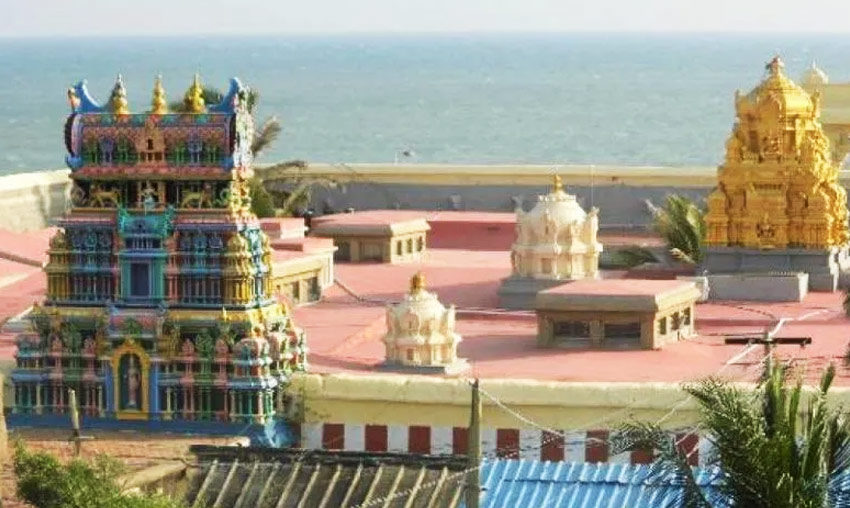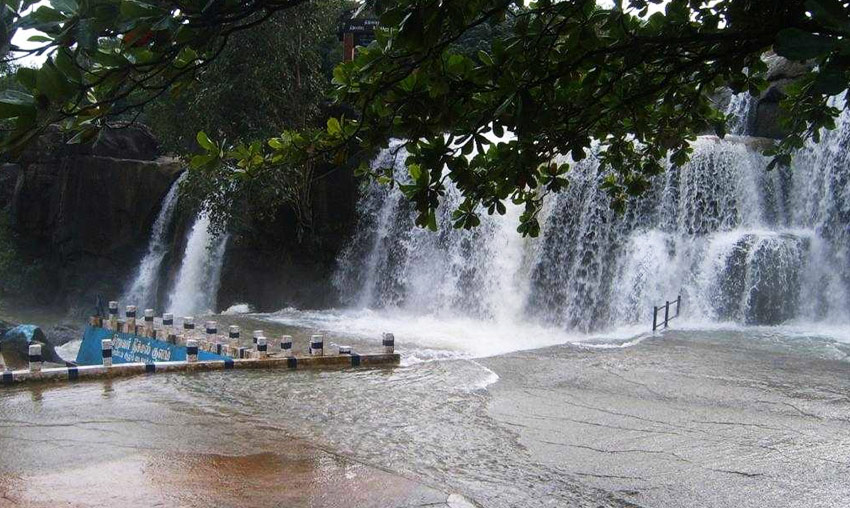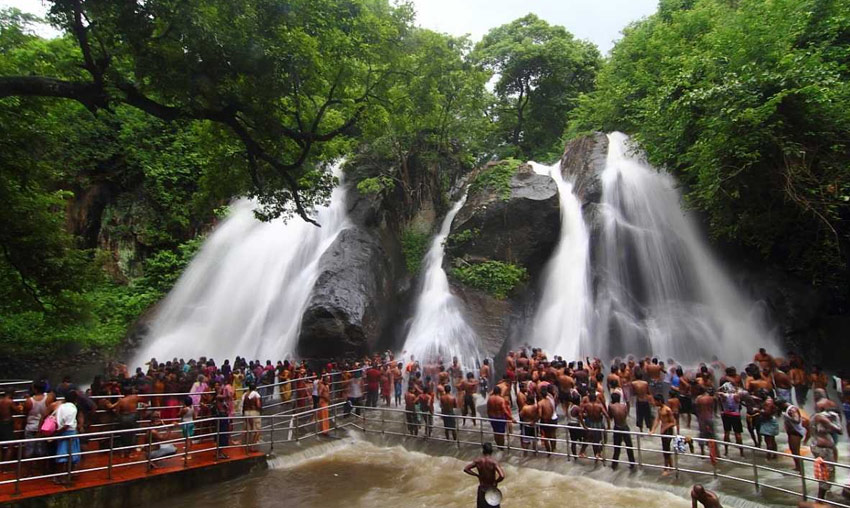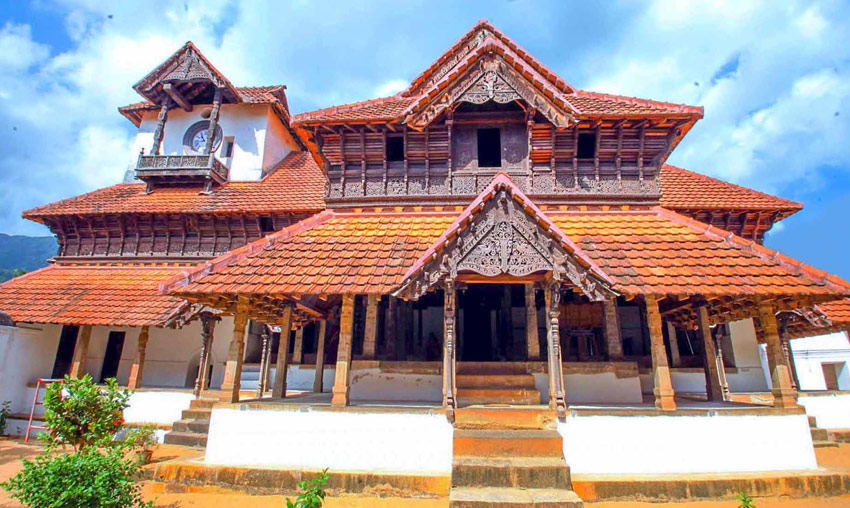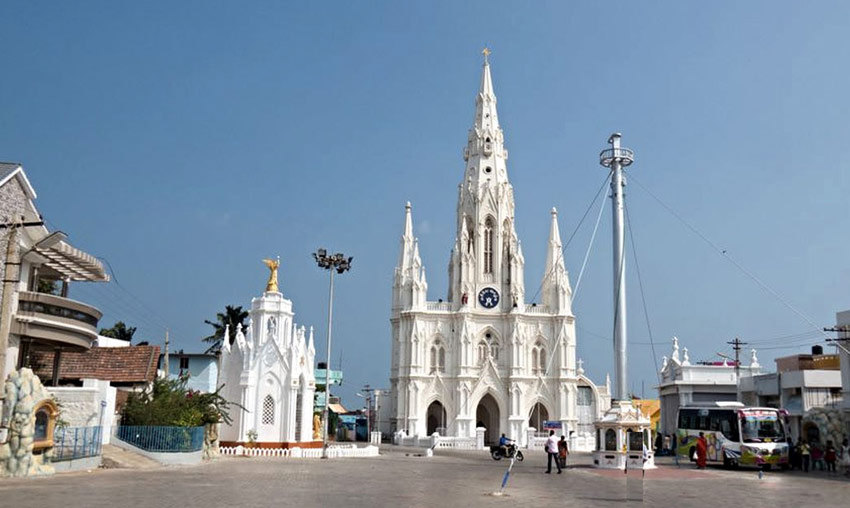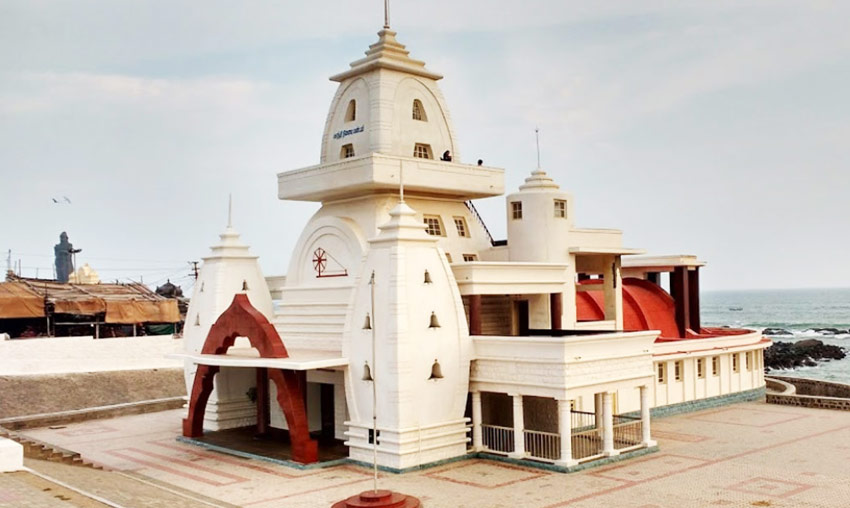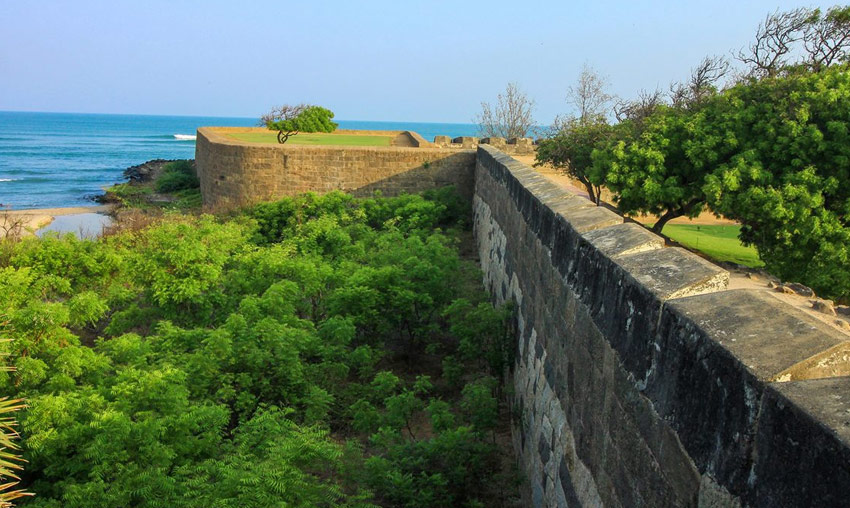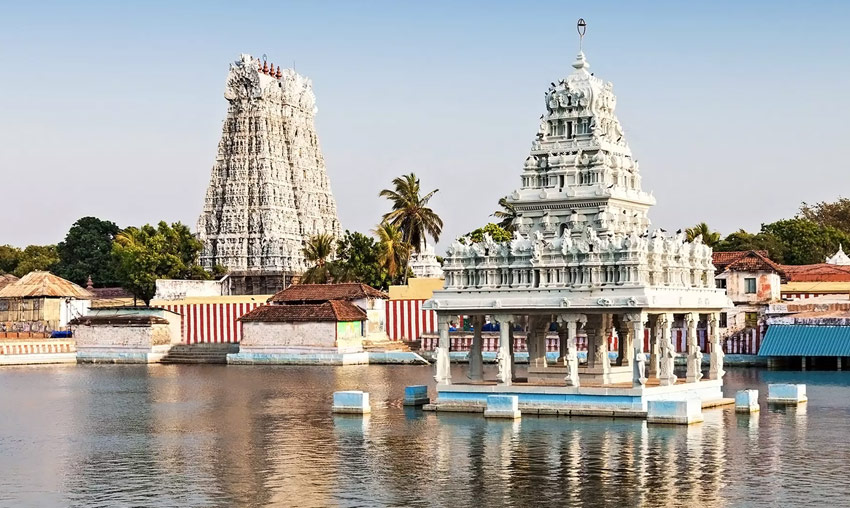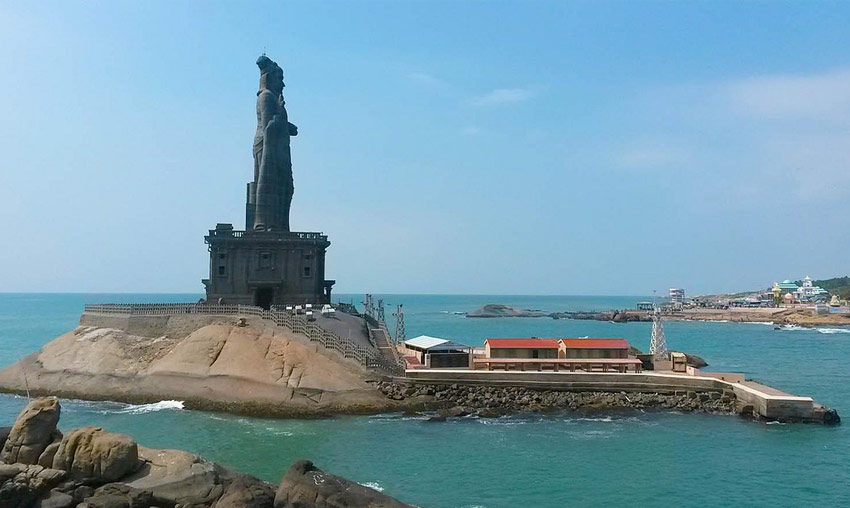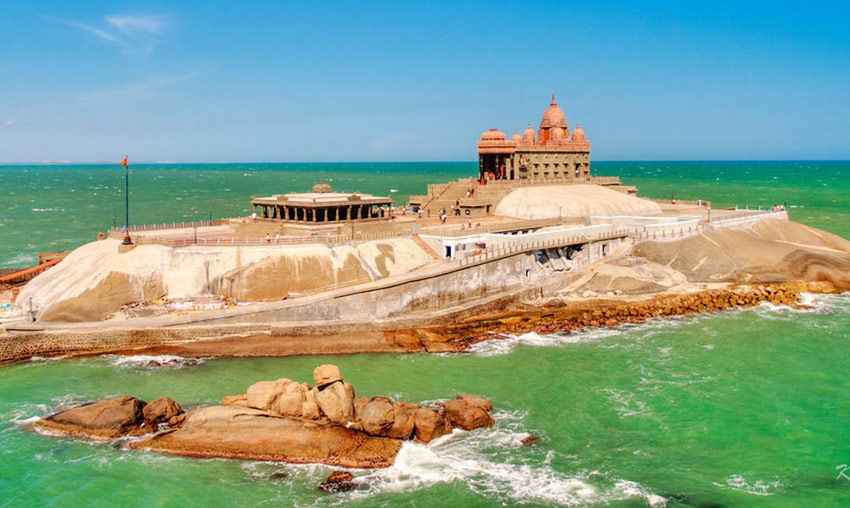Devi Kanyakumari / Kumari Amman Temple (Entry Fee, Timings)
One of the holiest temples in the world is Kumari Amman Temple, which is situated in Kanyakumari. Devi Kanya Kumari, also known as the Virgin Goddess, resides at this temple, which is regarded as one of the 108 Shakti Peethas.
This temple, which dates back more than 3,000 years, is noteworthy both historically and religiously. Because of its location across a large expanse of ocean, this ancient temple of Kanyakumari also offers breathtaking panoramic beauty. This temple is a must-see for all Kanyakumari Tour visitors, not just devotees, because of its spiritual ambiance, stunning natural beauty, and historic architecture.
See more places to visit in kanyakumari
Kumari Amman, sometimes referred to as Bhagavathi Amman, is the presiding deity of Kanyakumari Temple. The diamond nose ring of the Goddess Kanya Kumari is a remarkable characteristic of her seductive idol. The remarkable gleam of the nose ring is the subject of numerous well-known tales. The nose ring diamond is said to have been acquired from King Cobra. According to one well-known story, the glitter from the nose ring is so intense that a sailor once thought it was a lighthouse and struck the ship into the rocks. For this reason, the temple’s eastern door is maintained closed and only opened on special occasions five times a year.
Popular Temple Festivals
While it is possible to seek the Goddess’ graces at this historic temple at any time of year, a visit during the yearly festivities offers a completely different experience. The most significant event at the temple is Vaisakhi, which is primarily observed in May. The celebration lasts for ten days. The utsava idol of Goddess Kumari participates in a number of the festival’s processions.
The Navaratri, Float, Car, and Kalabham (Sandal) festivals are among the temple’s other significant celebrations.
Legend/History of Kumari Amman (Kanyakumari) Temple
Numerous ancient texts include references to Kanyakumari Temple’s past. The Kumari Amman Temple is mentioned in the great Hindu epics, the Mahabharata and the Ramayana. This temple is mentioned even in Sangam texts like Manimekalai and Purananooru.
The Kanyakumari Temple’s legend states that the demon Banasura had imprisoned all of the devas and held them in his terrible grasp. According to the boon, only a virgin girl could kill him. In order to eliminate the demon, Goddess Parasakthi assumed the shape of Kumari, the virgin girl, in response to the devas’ petitions and entreaties.
Lord Shiva eventually developed feelings for Kumari, and plans for their celestial wedding were prepared. Sage Narada attempted to call off the wedding in a number of ways since he knew that the demon Banasura could only be killed if the Goddess remained single. He came up with a strategy after he failed and the marriage ceremony was scheduled for midnight. Sage Narada assumed the shape of a cock on the day that Lord Shiva set out on his bridal pilgrimage from Suchindram at Valukkuparai to Kanyakumari. In order to deceitfully signal the start of morning, he crowed. Lord Shiva, hearing the cock, returned back, thinking that the auspicious time of wedding had passed, while the Goddess was left waiting for him. Later, Goddess decided to remain unmarried.
But when the Goddess’ beauty captivated the demon Banasura, who attempted to forcefully marry her, she destroyed him with her Chakra Gadha and released the devas from his captivity. Later, Banasura pleaded to the Goddess to forgive him of his faults and beg for her pity. The water of sacred confluence was sanctified by the goddess, who also pardoned him. It is said that anyone who swims in these waters will have their sins forgiven.
According to the tale, the goddess was asked to remain on Earth until the end of Kaliyuga by Saint Narada and Lord Parasurama. Later, Lord Parasuram built a temple along the sea, where he placed an idol of the goddess Kanya Kumari. There are about 25 theerthams on the seashore surrounding the temple. Another holy place near the temple is Sripada Parai, also known as Vivekananda Rock Memorial. Imprints of Goddess’s feet can be seen at the rock.
Architecture of Kumari Amman (Kanyakumari) Temple
The over 3,000-year-old Kumari Amman Temple, which is dedicated to Devi Kanyakumari, has a striking architectural design. This historic temple by the sea was formerly a part of the Travancore Kingdom.
Devi Kumari, the temple’s principal deity, faces east. Goddess is shown on the idol as a young girl wearing a garland. The deity’s nose ring is renowned for its exceptional shine. There are several stories about it as well.
There are sturdy stone walls all around Kanyakumari Temple.The northern gate serves as the temple’s principal entrance. Most of the time, the temple’s eastern gate is kept closed. It is only open on rare days and occasions, such new moon days in the months of Karkidakam, Edavam, and Vrischikam.
Within the temple complex, there are numerous more shrines devoted to Goddess Balasundari, Goddess Vijaya Sundari, Lord Surya Deva, Lord Ganesh, and Lord Ayyappa Swamy. The temple has a well from which water is drawn for the Goddess’s abhishekam. Moola Ganga Theertham is the name given to it.
Timings of Kumari Amman (Kanyakumari) Temple
The opening timings of Kanyakumari Temple for darshan are from 4.30 AM to 12.30 PM. It then closes in afternoon and again opens in evening from 4 PM to 8 PM.
How to Reach Kumari Amman (Kanyakumari) Temple
Devi Kanyakumari Temple is easily accessible by road, making it a convenient destination for tourists. The temple is accessible to tourists via taxi or autorickshaw. This location can also be reached by city busses.
This temple is located approximately one kilometer from the Kanyakumari Bus Stop and near to the Kanyakumari Railway Station, which is likewise approximately one kilometer away.
